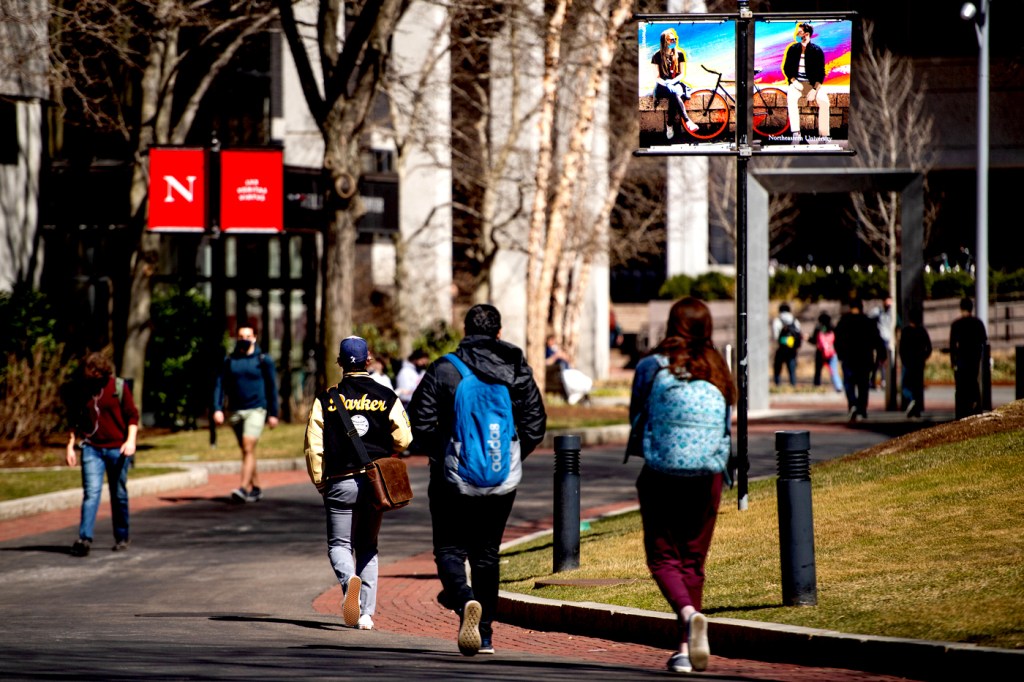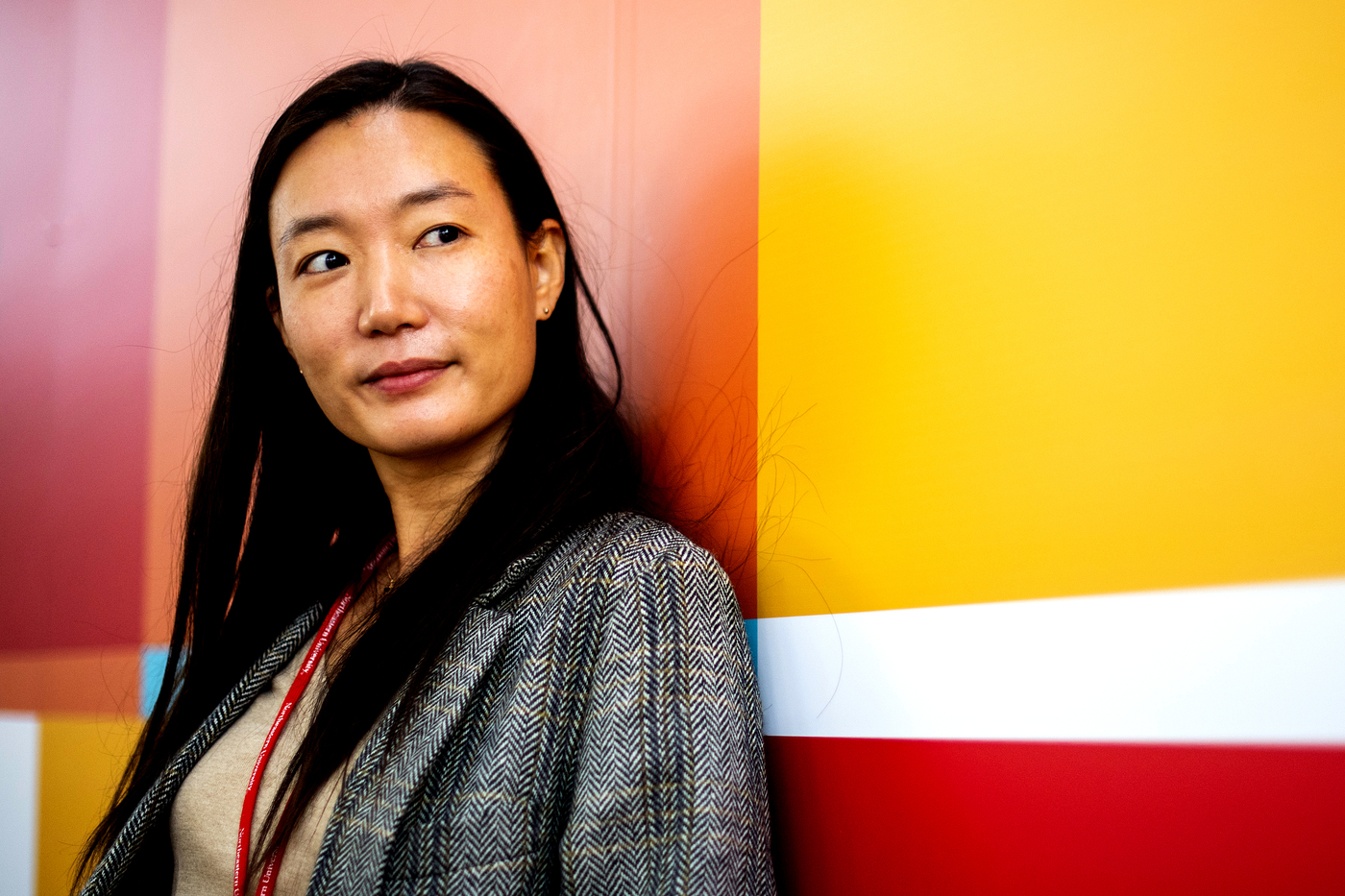COVID cases are rising. Here’s what you need to know.

In the past week, Northeastern’s COVID-19 testing operation reported an increase in the number of positive cases among students tested on the Boston campus. Since last Monday, positive tests from Northeastern’s testing facilities have been in the double digits most days, peaking at 33 cases last Thursday. That’s up from positive cases in the single digits most days of the previous several weeks.

Sehyo Yune, Director, COVID-19 Wellness University Health and Counseling. Photo by Matthew Modoono/Northeastern University
Across the City of Boston, the Commonwealth of Massachusetts, and the U.S., public health authorities are also reporting increases of various degrees.
“A lot of people think that the pandemic is over, for some reason,” says Sehyo Yune, MD, director of the COVID-19 Wellness team at Northeastern. “We’re not there yet,” she says, but, “There’s a light at the end of the tunnel, and we see the light.”
The university’s testing, contact tracing, and wellness housing operations have been successful in keeping the virus from spreading on the Boston campus and helping the university stay open and operational during the fall and spring semesters. The success is, in large part, due to the university community’s commitment to “Protect the Pack,” Northeastern health and safety protocols that include mask wearing, social distancing and adhering to a frequent COVID-19 testing schedule.
As the semester nears its end, the current increase in positives among the students is reason to remind everyone that it is more important than ever to stay the course.
Yune sat down with News@Northeastern to break down the latest rise in cases and your role in helping to prevent a more serious surge. This interview was edited for clarity.
Why are cases rising now? Have you seen a change in behavior from starting contact tracing last year to now?
It’s coming from multiple sources, I think. We see a lot more traveling than before, a lot more gatherings. Some of them are big, some of them are small. It’s mostly off-campus.
I don’t know if it is that more of those activities are happening, or that we hear more about it because we have more positive cases. But in the fall, whenever we’d call a positive case, a lot of them said, ‘I don’t go anywhere, I don’t see anyone outside my household, so I have no idea where I got it,’ and they didn’t have any close contacts. But these days, when we call people, a lot of them say, ‘Oh yeah, I ate out at this restaurant, I took an Uber there.’ They move around a lot and live a more normal life compared to in the fall.
Another factor that we could consider is the new UK variant, called B117, is becoming a dominant variant, and it is known to be more transmissible.
So, should we just go back to never leaving our homes except for class? Or is there a balance to strike?
Is that realistic? No it isn’t. But we have to go back to that level of vigilance, at least.
Wearing a mask is still absolutely important. So is social distancing. If you know everyone in the room is fully vaccinated, then you may be able to have dinner with a few friends. But if you don’t know who they are, or if you don’t know where they went two days ago, if you don’t know how careful they may have been, then you should think again.
If you cannot eliminate the risk, are you not going to do anything because you can’t make it zero? Or would you still do your part to reduce the risk? Reducing the risk is not only about you, but it’s about the community. And I think that’s the most challenging concept for people to understand. What we do to isolate and quarantine people is not necessarily for them. Honestly, it’s for the public’s health.
What happens when a case investigator calls to tell you that you tested positive?
The case investigator calls the person, lets them know that they’re positive, and talks through their symptoms. Then we decide who they have been in close contact with during the infectious period until the time they’re on the phone with us.
We always ask the positive cases to let their close contacts know themselves, but ultimately it is their choice. If they don’t feel comfortable telling them, we can’t force that. Either way, contact tracers will call their close contacts to tell them that they have been exposed.
What counts as a close contact? How can I socialize with less risk?
It’s a case-by-case judgement [by contact tracers]. But in general, it’s within six feet over 15 minutes over a 24 hour period, meaning if, ‘I was within six feet with this person for five minutes, but that five minutes repeated more than three times over a day,’ it still accumulates, and you become a close contact. Even if you were wearing a mask, if you have been within six feet, you’re still a close contact. But we could sit in a room together wearing a mask for a longer period of time, and it would not be considered a close contact if we’re staying more than six feet from each other.
If you have lunch with someone indoor or outdoor for longer than 15 minutes, you are still considered a close contact. If you play sports that involve close contact with other players, or have intimate physical contact with someone, those encounters are also considered close contact.
What can you expect if a contact tracer calls to tell you that you’ve been exposed to COVID-19 by being a close contact?
We don’t tell close contacts anything about the exposure itself. We do not describe the exact time and date, or the place of the exposure, nor do we tell them who may have exposed them. We just tell you that you were exposed and you have to quarantine. And these are the dates that we recommend you be tested. And if you test negative on this date, and stay asymptomatic, you may finish your quarantine before the 10 days.
How anonymous is a conversation with a case investigator? Could you get in trouble for telling them about a social gathering that broke university rules?
Completely anonymous. Understandably, students are nervous if they did something that is in violation of the policy. But we don’t tell anyone. We really don’t tell anyone outside of the contact tracing team what they did or where they got exposed. It’s really important that we build that trust with the students. We’re not going to get them into trouble. So all we do is to find out who is exposed, and provide them with quarantine and isolation guidelines.
Are students forthcoming about their close contacts when speaking with a case investigator?
Although not 100 percent of our students are forthcoming with us, I think most of them are. Some of them are really, really helpful, which is why we want to keep the promise that we’re not going to get them into trouble. They really help us to get a hold of the cluster. They know that it’s because of the work that we’re doing here for testing and contact tracing that they are able to be here. A lot of other schools are still online and their students don’t get to be on campus.
There’s always going to be some people who will not tell us who they have been in contact with, or not remember. It’s about risk mitigation, not risk elimination. It’s always better to do something than to do nothing. Let’s say there are five people who were exposed and should be in quarantine, but contact tracers were only told about two people, who are now in quarantine. Is it a failure? No, because you still block further spread from those two people.
How has Northeastern’s contact tracing program slowed the spread of COVID-19?
Honestly, we’re not doing anything special or anything secret. We’re just sticking to the basics.
Most of the positive cases that came over the weekend are from the people that were identified as a close contact and were quarantined before they tested positive, which is the whole point of contact tracing. We don’t want them to be walking around and spreading it elsewhere. It’s the evidence that contact tracing works.
For media inquiries, please contact media@northeastern.edu.





